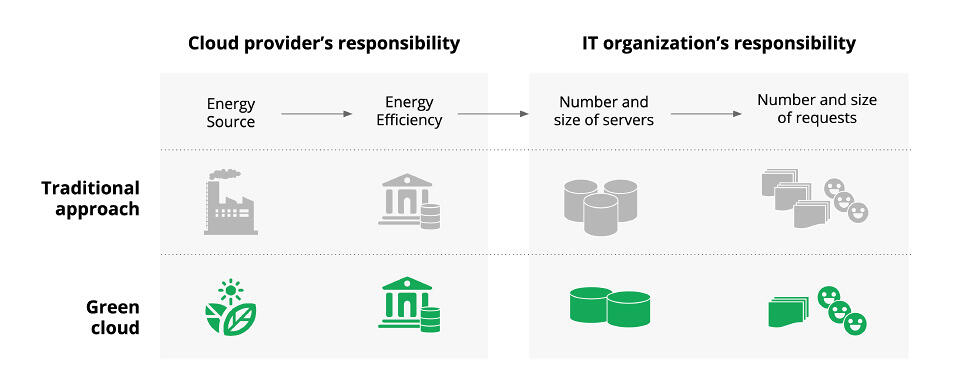Part IV: COVID-19 and climate
This article explores what we can learn from the great pause in pollution that COVID-19 created. It looks at how we move forward, and avoid returning to a ‘business as usual’ that causes irreversible global heating; how investors and employees are driving climate action; and options for businesses to consider in a more sustainable BAU. It gives references and examples throughout, including links to specific tools which can be used to help in planning a green recovery.
Contributors:
Dan Lewis-Toakley | Natalie Hollier | Tom Sulston
Remote work, the shutdown of factories, and a massive short term reduction in travel during the COVID pandemic have been forecast to reduce the global carbon footprint by 8 percent in 2020 [1]. That's the level of reductions needed every year to meet the Paris Climate Agreement.
This pause in our relentless polluting has shown what’s necessary to prevent the worst effects of climate change taking hold. Scientific modelling shows that we need to cut global emissions by 7.6 percent [2] to prevent a greater than 1.5 degree rise of global temperatures – where the effects of global warming will be impossible to reverse [3].


These photos of Sao Paulo show that air pollution can be dramatically improved in a short space of time, the first was taken in November 2019. There are an estimated 4.2 million [4] lives lost every year related to air pollution alone. That figure doesn’t even account for deaths from events caused or aggravated by the climate crisis: flooding, tsunami, bush fires, other natural disasters and their aftermaths.
A more climate-conscious future, or back to BAU?
We’ll see in Part V that the technology industry can act, and can even take responsibility, as it becomes even more deeply-entrenched in society. Can it also help companies take positive action on climate ahead of it being enforced? This entrepreneurial approach could prove critical, particularly as major international climate meetings have been postponed to 2021, with potentially-devastating delays in policy change.
Organizations have a unique opportunity to re-think their daily operations. Having scrambled to reset and maintain operations remotely, they can now reconsider – based on employee well-being and climate impact – before resuming BAU.
Climate-consciousness isn’t just about wind farms. Companies in every sector can consider their supply chains, how they can support a circular economy, their waste and energy consumption as well as their own carbon footprint. Technology can help drive the transition, not only with remote conferences, collaboration and work, but it can also help organisations track and reduce their carbon emissions across their entire physical and digital supply chains.
Thoughtworks partnered with Yara Fertilizers to use IoT technology that allows for real-time monitoring of fertilizer inventory to help reduce waste. Elsewhere, blockchain is increasingly being used to manage waste and improve recycling efforts [5]. There are some great tools that allow organizations and individuals to better account for carbon emissions. We’d recommend Tradewater’s Carbon Calculator [6], which helps individuals offset their emissions based on their personal carbon footprint.


Investors and employees expect change
There is a growing investment trend towards sustainability, with $23 trillion in managed portfolio assets now dedicated to sustainable investing [7]. Younger generations of investors and employees seriously consider these factors in deciding where to invest, spend and work. Boards will be expected to have a sustainability officer, and to answer to investors on their progress towards their climate goals.
There has also been a growing momentum from tech employees calling for their business leaders to do more to address the climate crisis. In September 2019, employees from big tech walked out to join the Global Climate Strikes around the world. Some months later Jeff Bezos announced a $10 billion fund [8] for climate scientists, activists, and non-governmental organizations.
Activism re-imagined
As the COVID-19 pandemic set in, climate activists around the world have had to re-strategize and innovate to push political and business leaders for change. Many climate movements have also shifted their policy demands in the wake of the crisis, for example by calling for a Just Recovery [9] or Just COVID-19 Relief [10]: focused on people, community, and resilience for future crises.
In April 2020, Thoughtworks partnered with 500+ climate and social justice organizations to support Earth Day Live[11], a three-day long livestream event that was broadcast to over 4.8 million people, calling on leaders for change. Alongside this, the Fridays for Future movement organized a digital climate strike.


Tech driving the new BAU
In their re-consideration of BAU, organizations and individuals need to remember that our digital lives also use energy. The tech sector already contributes ~3-3.6 percent of global CO2 emissions [12], a similar amount to the aviation industry – and this is only going to increase rapidly. We assumed that virtual interactions and experiences were always more environmentally-friendly, but if the internet were a country it would be the sixth largest producer [13] of carbon emissions and would soon be responsible for 10 percent of global electricity usage [14].
The good news is that we can now track and compare the footprint of our digital lives and make dramatic improvements to our carbon emissions. We have seen the rise of carbon footprint calculations in code such as through standard emissions index APIs [15], automated emissions data gathering through IoT sensors, and carbon offsets on demand via APIs [16]. You can also measure the green hosting and emissions of websites via the Green Web Foundation’s Green Web Check [17] and Wholegrain Digital’s Website Carbon Calculator [18].
Green cloud ahead
Most organizations can also consider a green cloud strategy. But what do we mean when we say “green cloud”? It’s not just a matter of choosing the most efficient or renewable cloud provider – IT organizations are responsible for their resource and energy consumption during the whole development lifecycle. Green cloud computing at its best is a datacenter fed by renewable energy. That datacenter runs software on its infrastructure that is designed and optimized to minimize energy consumption (and costs). Once that efficiency is in place, companies can measure the CO2e output of their cloud infrastructure and work out the offset required.


The benefits aren’t just environmental - this approach also improves performance of IT organizations overall and reduces costs. In making the processing more efficient, we speed up page loads, build and deploy pipelines. We’ve worked with an e-commerce company on an agile shift to the cloud that reduced energy usage by 13 percent, and an independent news company to reduce compute need by 50 percent, resulting in 25-30 percent cost-savings.
Tools such as the Microsoft Azure Sustainability Calculator [19], the Green Web Foundation’s AWS Green Cost Explorer [20] and Etsy’s Cloud Jewels [21] now exist to help organizations measure their cloud energy consumption and reduce their digital carbon footprint.
A green recovery needs all of us
The COVID-19 pandemic has had devastating consequences on lives and communities around the globe, while dramatically reducing carbon emissions at the same time. Humanity has had a glimpse at the breadth and depth of change required in order for us to meet the goals of the Paris Climate Agreement. To avoid returning to an unsustainable BAU, on a path towards climate and environmental catastrophe, it is imperative that businesses, governments, and individuals reconsider what role we can play in a green recovery. Technology can help drive this change, but we need to decide to use it.
[3] https://www.ipcc.ch/site/assets/uploads/sites/2/2019/06/SR15_Full_Report_High_Res.pdf
[4] https://www.who.int/health-topics/air-pollution#tab=tab_1
[6] https://tradewater.us/offsetnow/
[7] https://www.forbes.com/advisor/investing/heres-how-to-invest-in-a-socially-responsible-way/
[8] https://www.nytimes.com/2020/02/17/technology/jeff-bezos-climate-change-earth-fund.html
[9] https://350.org/just-recovery/
[10] https://www.fiveprinciples.org/
[11] https://www.earthdaylive2020.org/thanks/
[13] https://serving.green/#usage-stats
[14] https://serving.green/#co2-generation
[15] https://alandindexsolutions.com/
[17] https://www.thegreenwebfoundation.org/
[18] https://www.websitecarbon.com/
[20] https://github.com/thegreenwebfoundation/green-cost-explorer
[21] https://codeascraft.com/2020/04/23/cloud-jewels-estimating-kwh-in-the-cloud/




















